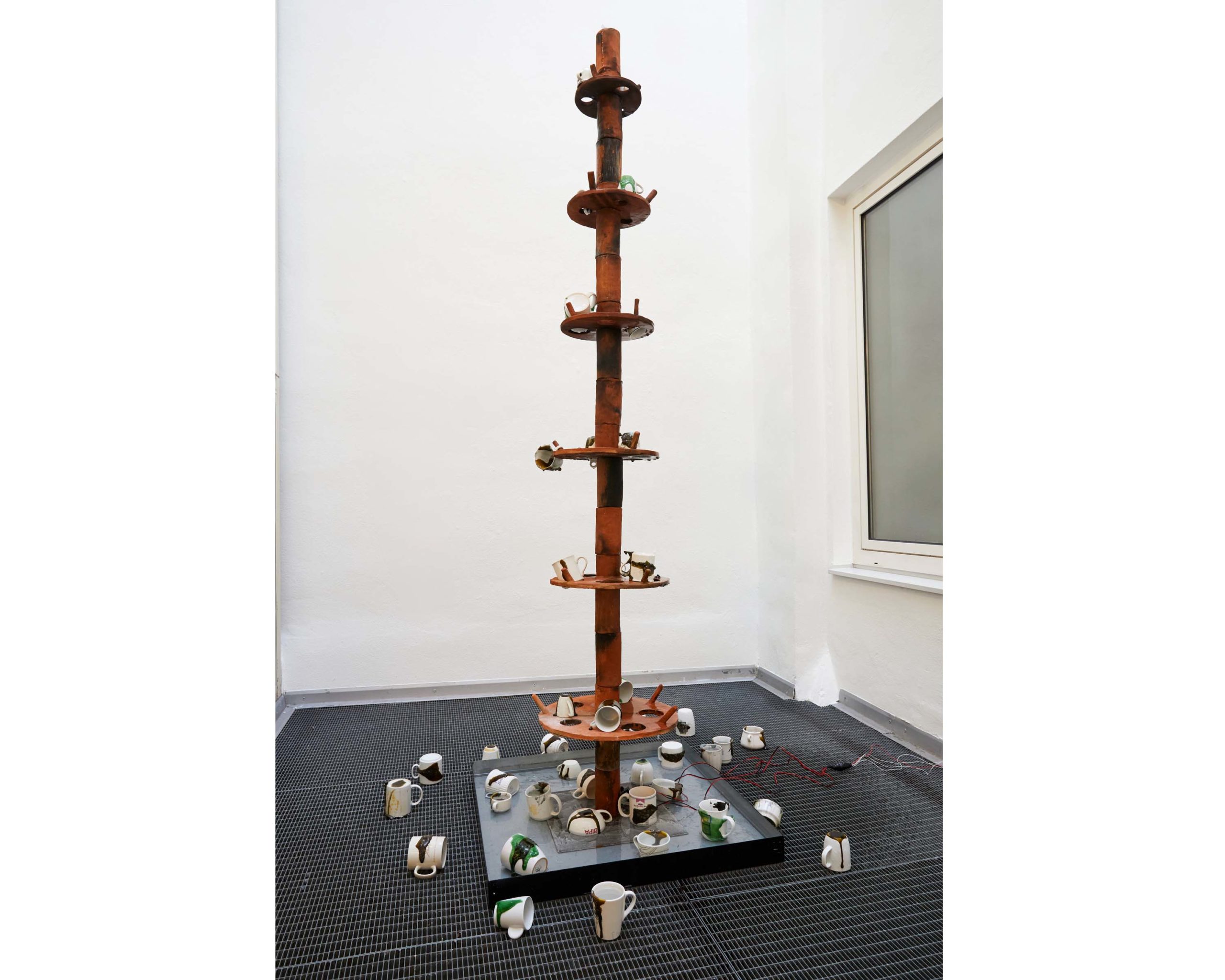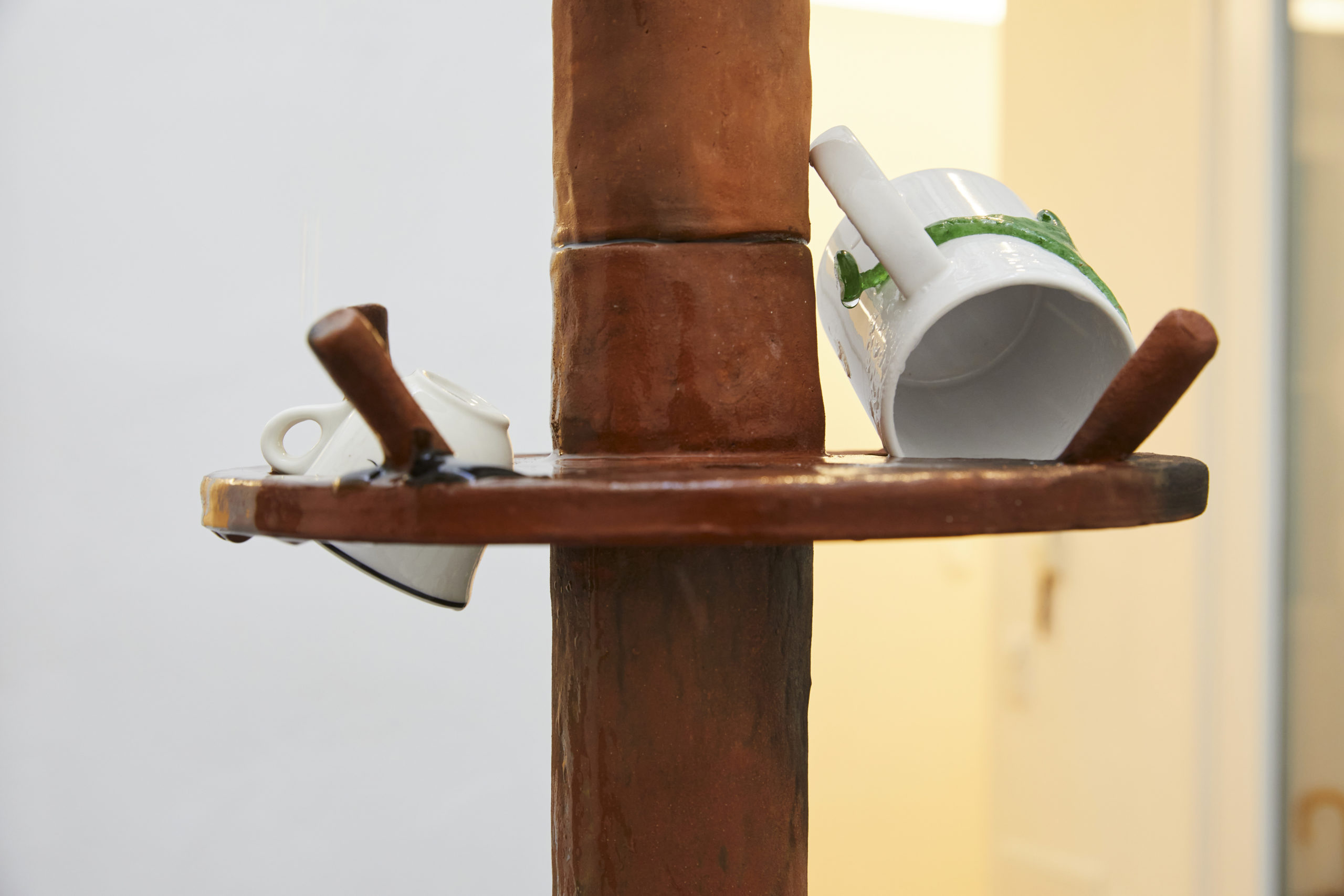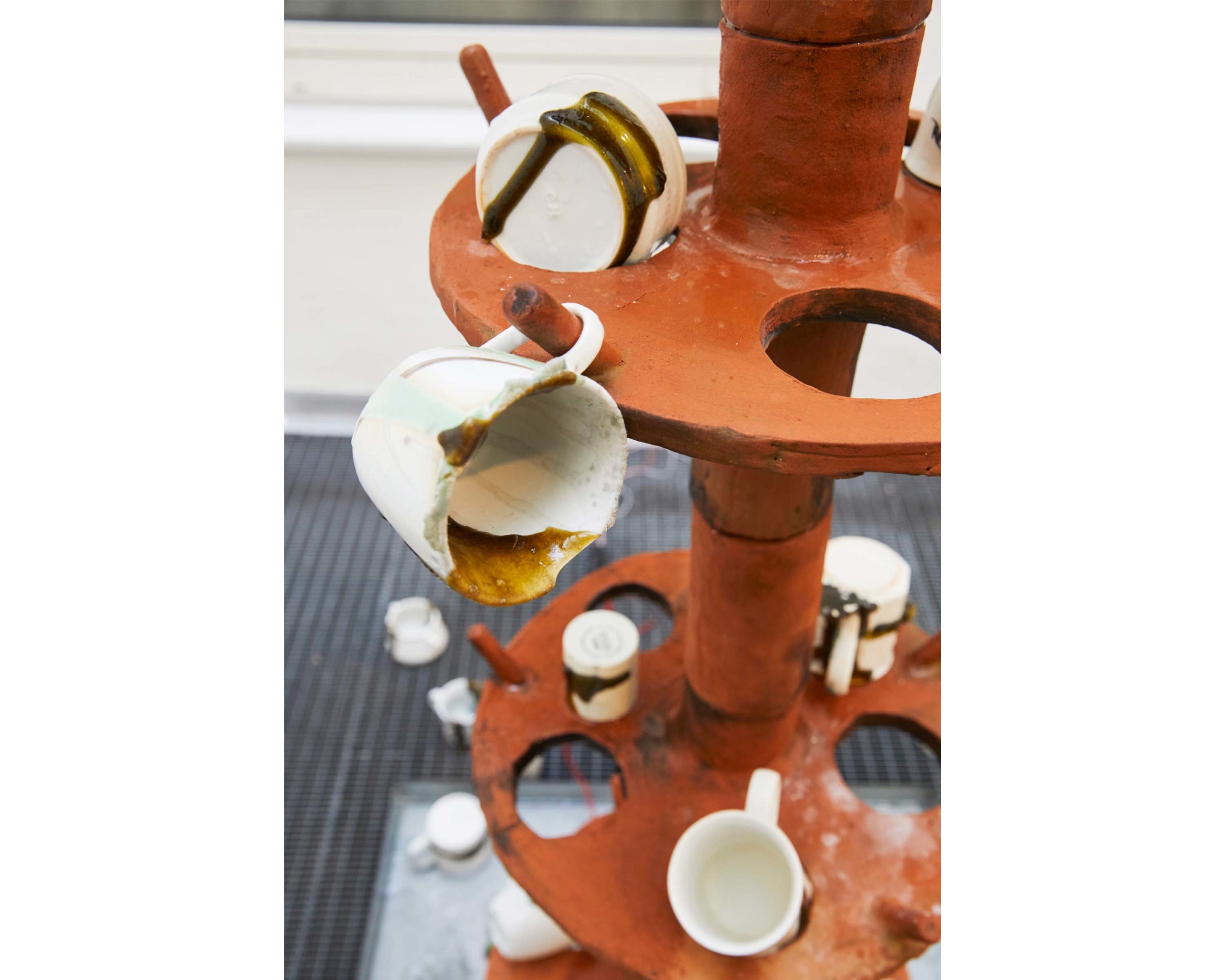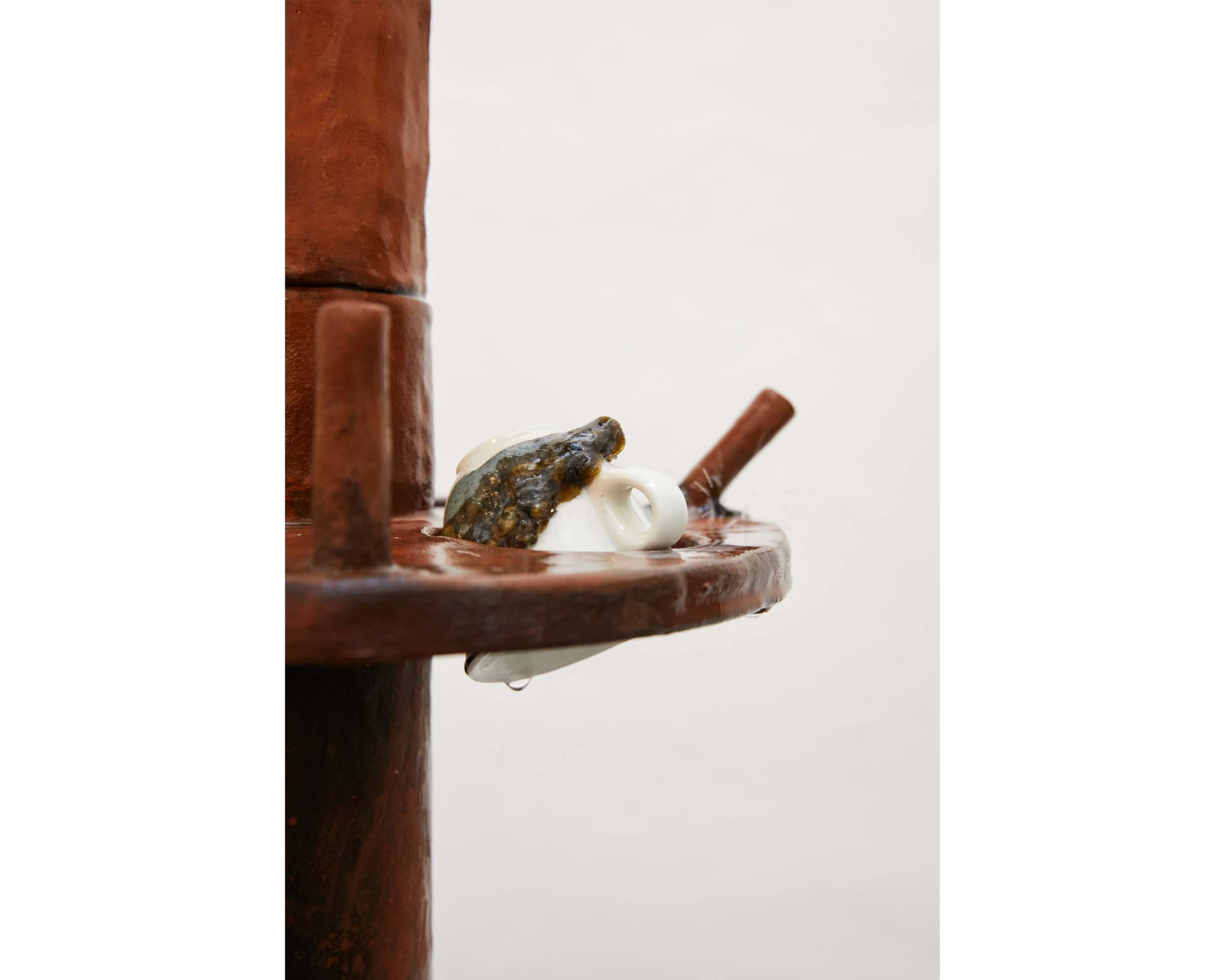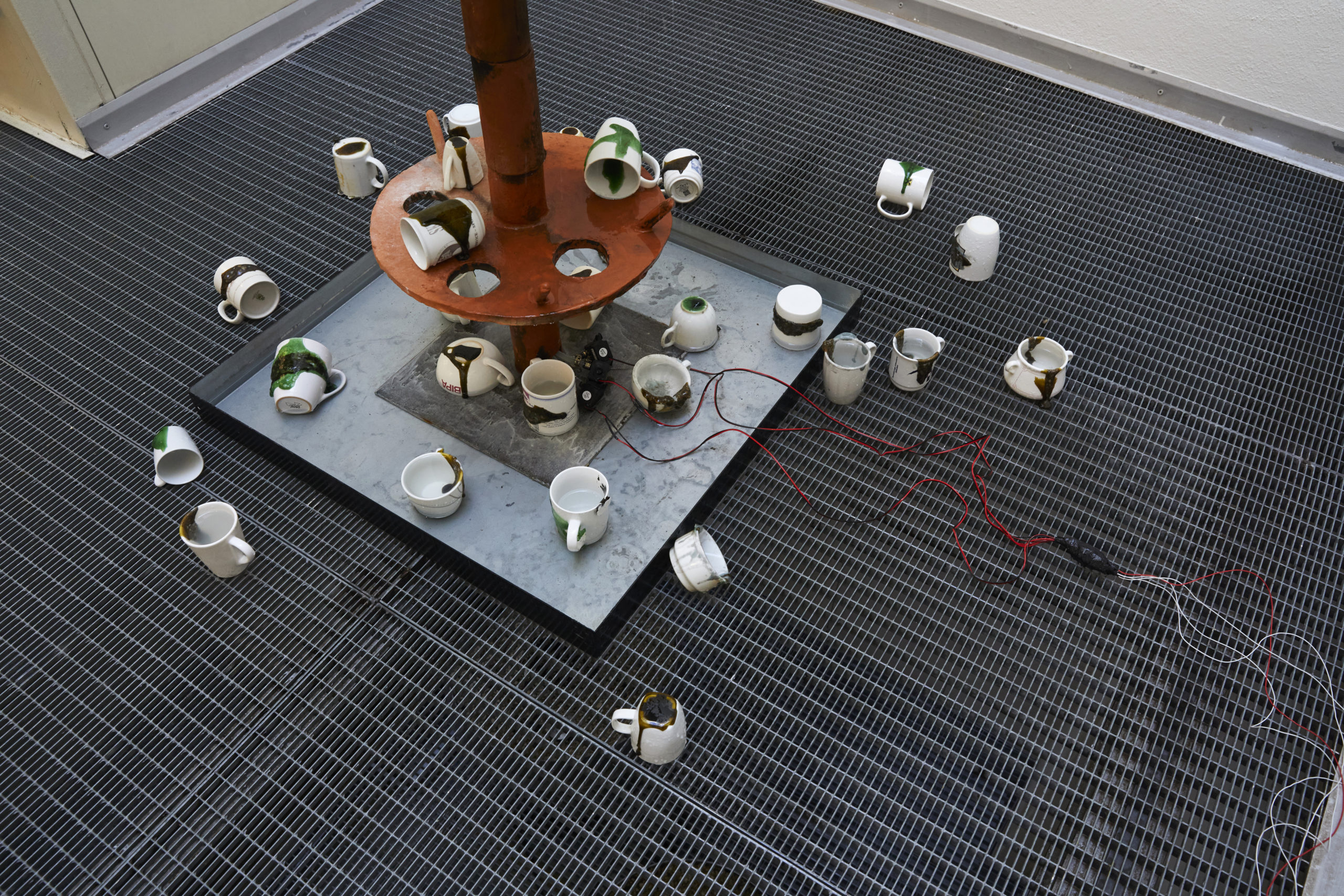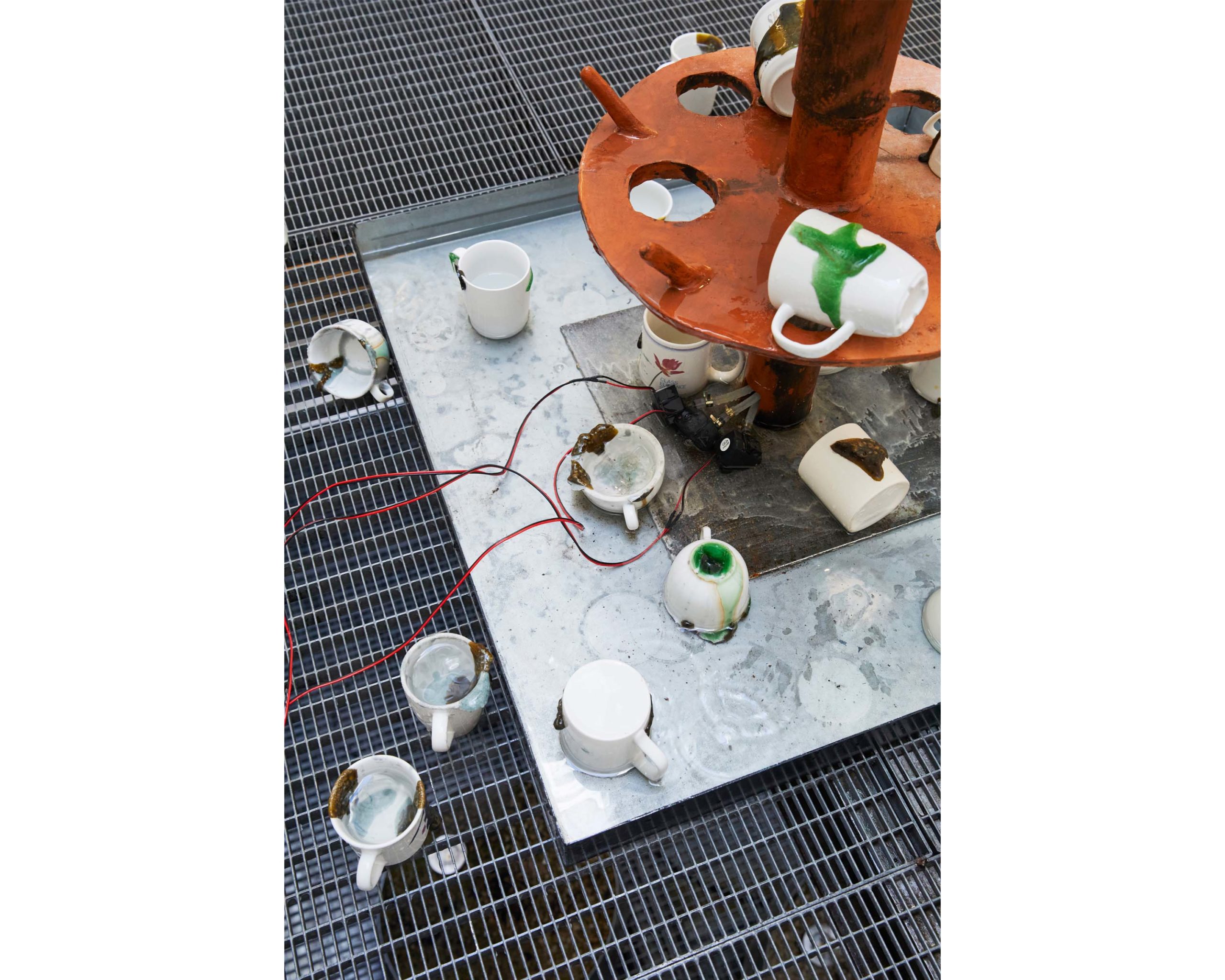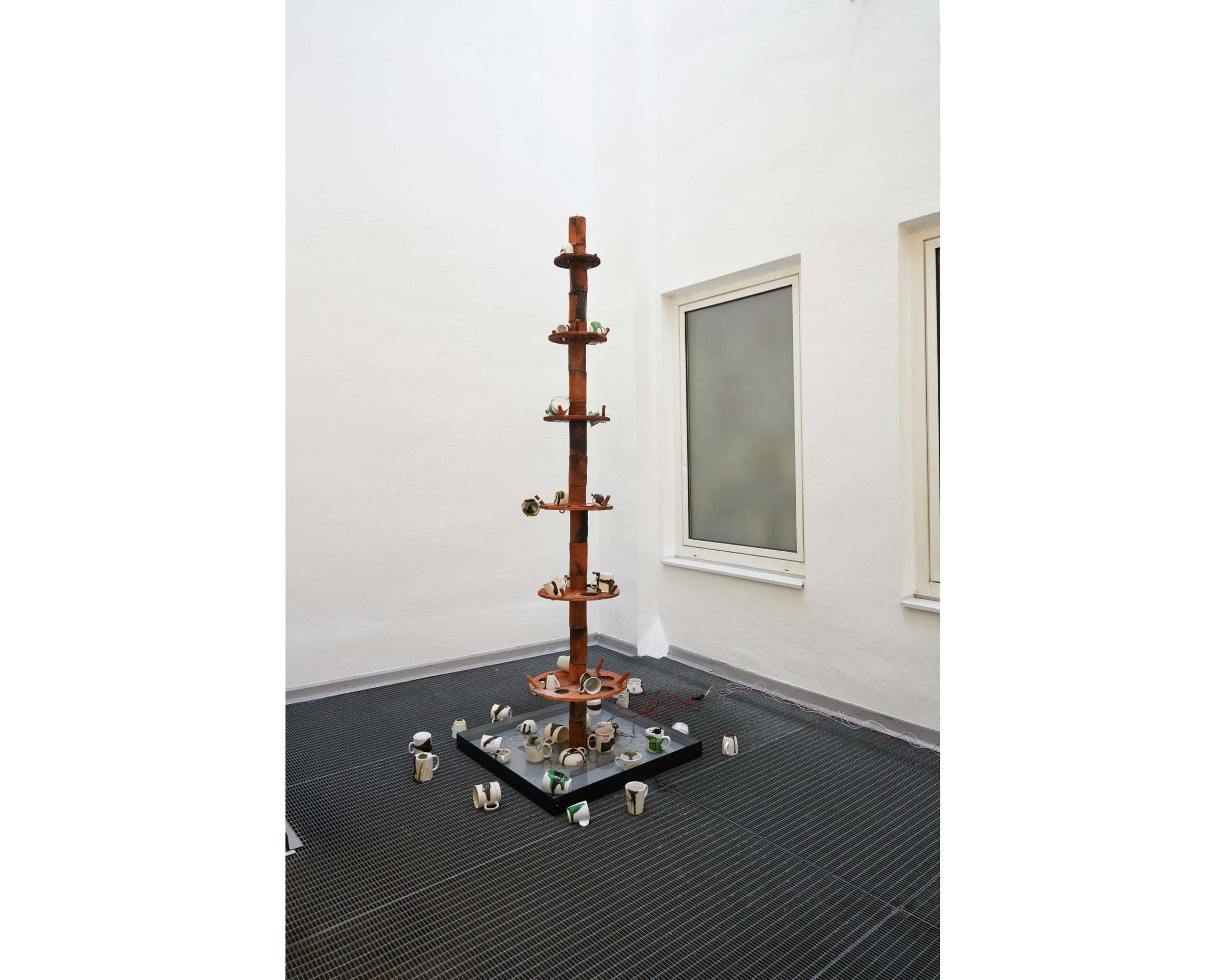Photos Vienna © Flavio Palasciano
Photos Klagenfurt © Galerie3
Exhibition Mud#3 Group: Who has land to make a fire
A COLLABORATIVE PROJECT BY
CÉLINE STRUGER, KRISTIN WEISSENBERGER & PATRÍCIA J. REIS
Mz* Baltazar’s Laboratory
Jägerstraße 52-54
1200 Vienna
11.03.2023 – 21.04.2023
Exhibition Mud#3 Group: Who has land to make a fire
A COLLABORATIVE PROJECT BY
CÉLINE STRUGER, KRISTIN WEISSENBERGER & PATRÍCIA J. REIS
Im Lichthof
23.09.2023 – 28.09.2023
Mud-Group#3: Who has land to make a fire? 2023
The project by Patrícia J. Reis, Céline Struger and Kristin Weissenberger was presented at Mz* Baltazar’s Laboratory (2023), Vienna, in the form of an exhibition. It revolved around the group's collaborative and artistic process, using ceramics as their primary medium for exploration. The group’s goal was to create a shared artistic process that encouraged reflection and discussion among the artists involved. Through this project, the artists also wanted to shed light on the emancipation history of female artists and to explore the relationship between ceramics, hacking and other fields of art. Ceramics have also increasingly been discussed as materials with agency within the discourse of new materialism, which emphasises the active role of materials in shaping, and being shaped by, social, cultural and historical contexts. Ceramicists have long been aware of the agency of their materials, as the process of creating ceramics involves a dialogue between the artist and the material itself. According to Jane Bennett (2010), ‘vibrant matter’ has its own agency and vitality – it is not merely a passive object to be acted upon by human agents. Ceramic materials, like other materials, have their own properties and capacities; they can exert influence over the artist's process and the final outcome of the artwork. For instance, the way that clay responds to touch, the effects of heat on glazes, and the colours and textures of various clay bodies all contribute to the creative process and the final product. For this project, the artists wanted to employ an ancient technique involving firing natural clay in a wood fire. Considering that lighting open fires in public spaces within the city of Vienna is restricted, except for designated areas for barbecues, the artists asked the question, ‘Who has the land to make a fire?’ This inquiry reflects a positive inclination towards embracing traditional, low-tech methods for warmth, light and community-building through fire, as well as a critical perspective. It not only signifies a desire to move away from the often-detached and impersonal experiences of contemporary urban lifestyles but also expresses a yearning to establish more direct, embodied connections with nature and others. By raising this question, the artists were demonstrating their radical intent to challenge conventional understandings of ownership, property and resource access, while also exploring sustainable communal living and alternative models of resource use. The Mud-Group's artistic journey began with a series of initial meetings where the members explored their shared interests in ceramics, particularly the cultural and feminist background. The group recognised the importance of using traditional techniques and materials as a way to resist capitalist production methods and to highlight the importance of sustainable and ethical hardware. As the group members developed their artistic practice, they began to experiment with ancient ceramic production techniques in a workshop located in the forest. The group members were able to learn about, and incorporate, sustainable methods for producing ceramics, which furthered their commitment to anti-capitalist practices. However, the Mud-Group's radical attitude did not stop there. They continued their exploration of autonomy by hacking/reproposing the city infrastructure and reclaiming a public space on Donau Island. Donau Island's public barbecue spots in Vienna, established in the 1970s following social–democratic reforms, are still in use today and attract visitors from all walks of life. While some upper/middle-class and privileged citizens view the spots as unsanitary and a nuisance, these areas serve as a vital social and cultural space embraced by many first- and second-generation families with migrant heritage, and new Austrians, celebrating their cultural traditions and communities. These differing attitudes towards the public barbecue areas are indicative of a larger issue of class and cultural segregation in Austrian society. Privileged citizens may not understand the importance of the barbecue spots for people who have struggled for representation in public space and to find areas to celebrate without being harassed. During this exercise, the group members questioned the idea of public space and ownership, using their art to push boundaries and reclaim space for public use. Hacking of urban infrastructure for autonomous living refers to the practice of using and repurposing existing urban infrastructure for self-sufficient and sustainable living. This practice has gained popularity in recent years as people seek alternative solutions to live off the grid and reduce their reliance on traditional forms of infrastructure, such as power grids and water supply systems. Ethical hardware and DIY approaches play a crucial role in this process, enabling individuals to build and maintain their own sustainable systems. By hacking and repurposing existing infrastructure, individuals can create their own networks of sustainable resources, allowing for greater autonomy and resilience. This practice not only promotes self-sufficiency but also contributes to a more sustainable and ethical use of urban resources. Artistic hacking is also becoming increasingly popular as a means of creating sustainable living solutions. By incorporating creative and artistic elements into the design and implementation of autonomous living systems, individuals and communities can create more engaging and aesthetically pleasing solutions that are also functional. Through the exhibition, visitors were able to witness the Mud-Group's artistic journey and its members’ commitment to sustainable and ethical hardware, autonomy and a DIY approach to ceramic production. The exhibition showcased the group's artwork, including ceramics produced using traditional techniques, as well as video documentation of their public space reclamation project on Donau Island. Furthermore, this installation presented two unique pieces. First, a water fountain made entirely out of ceramic pieces that were fired at Donau Island, with ceramic plates holding cups collected from common spaces such as offices and artist ateliers. The cups, which carry advertisements, are intentionally covered with broken glass melted onto them. The second piece features a customised metal structure specifically built for barbecue place number 12, along with a hacked barbecue rod typically used for cooking chicken. This piece re-enacts the firing process and adds to the overall experience of the installation. Céline Struger and Kristin Weissenberger have joined forces with the PEEK Feminist Hacking: Building Circuits as an Artistic Practice research project, which seeks to establish feminist hacking as a strategy for emancipation in the art, science, and technology fields (Stefanie Wuschitz, Taguhi Torosyan, and Patrícia J. Reis). The exhibition aims to showcase how the project's approach to new materialism promotes emancipation through the agency of materials. Mud-Group III: Who has land to make a fire? showcases a collaborative and thought-provoking approach to ceramics and its relationship with other fields of art.
water fountain made of natural clay collected in Austria (Burgenland) and fired in the public barbecue of Donau Island in Vienna; industrial cups with diverse advertisements covered with melted waste glass, rounded barbecue metal structure with electrical rod customised and natural clay; video with documentation of the action at Donau Island in Vienna, COLOUR, FULL-HD, MUTE, 43 min.
- Categories:
- Share Project :
















